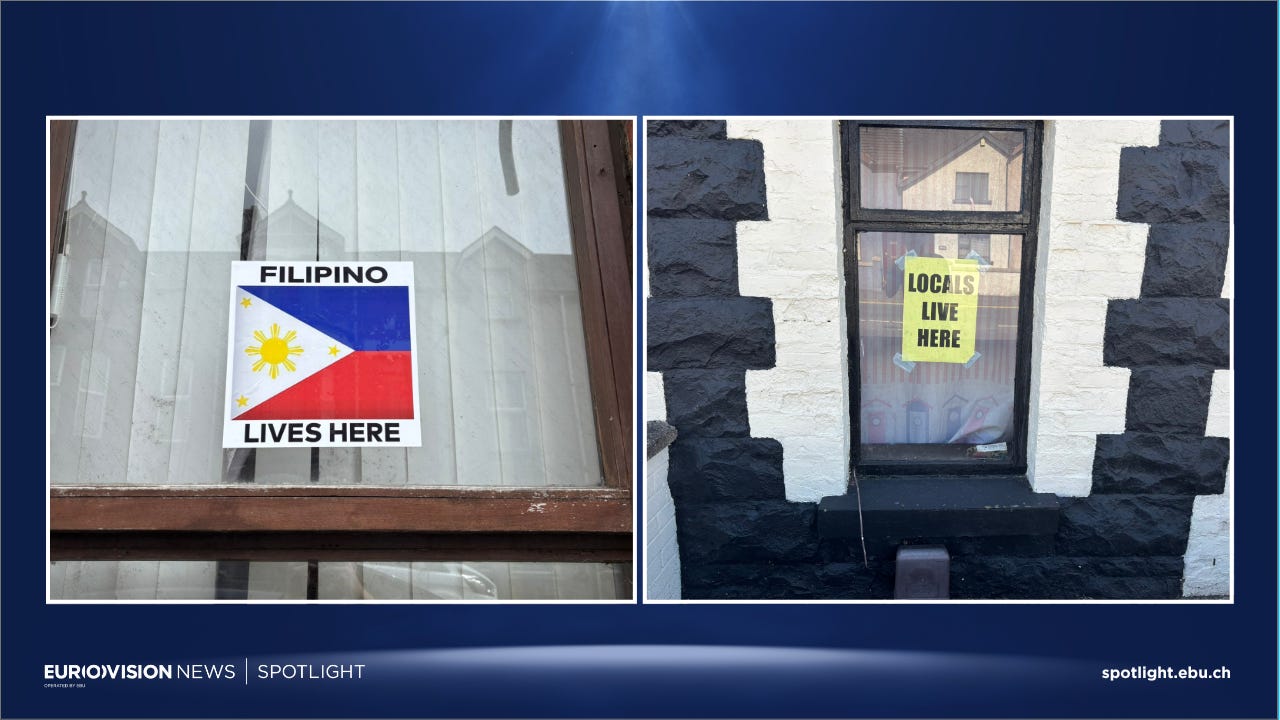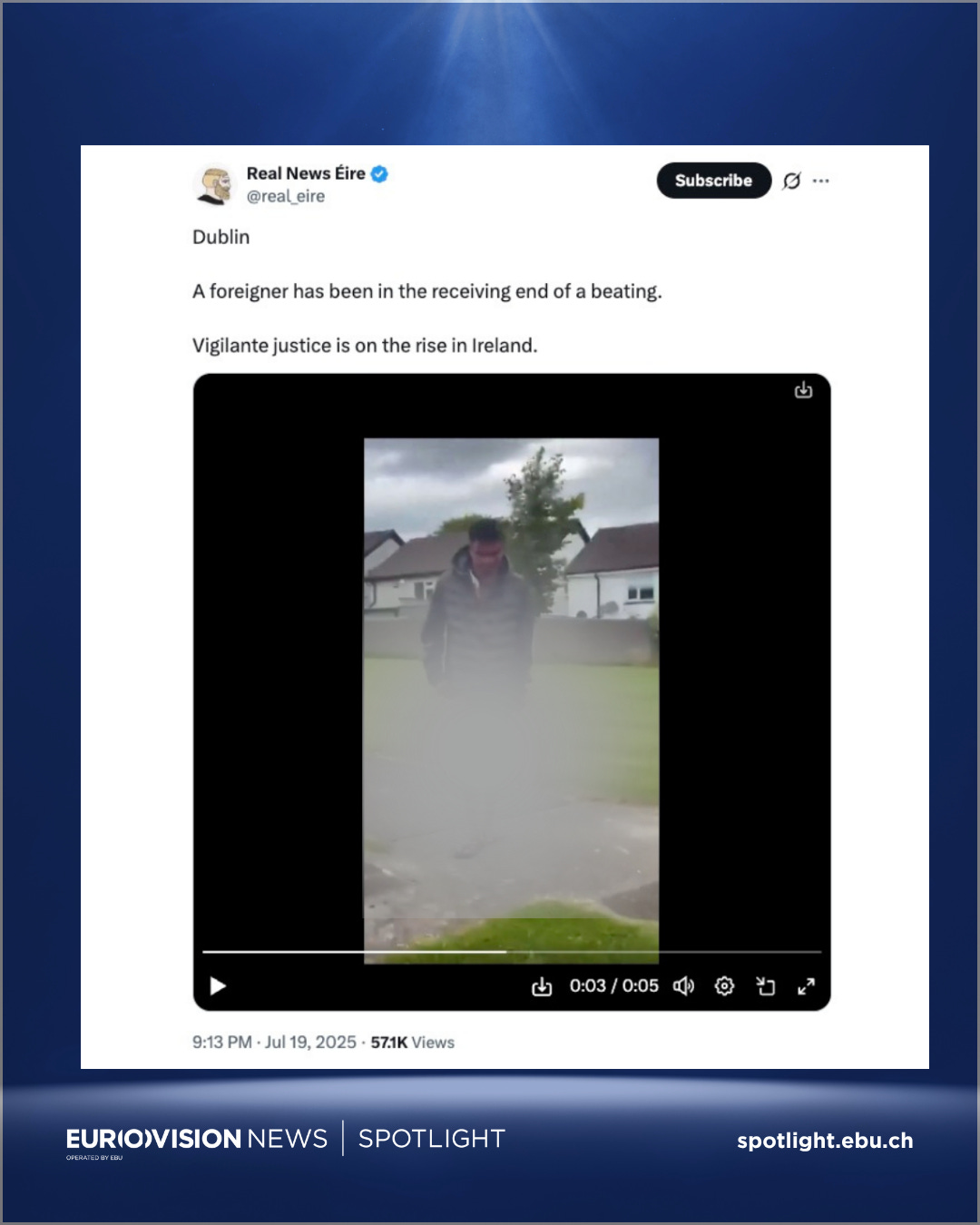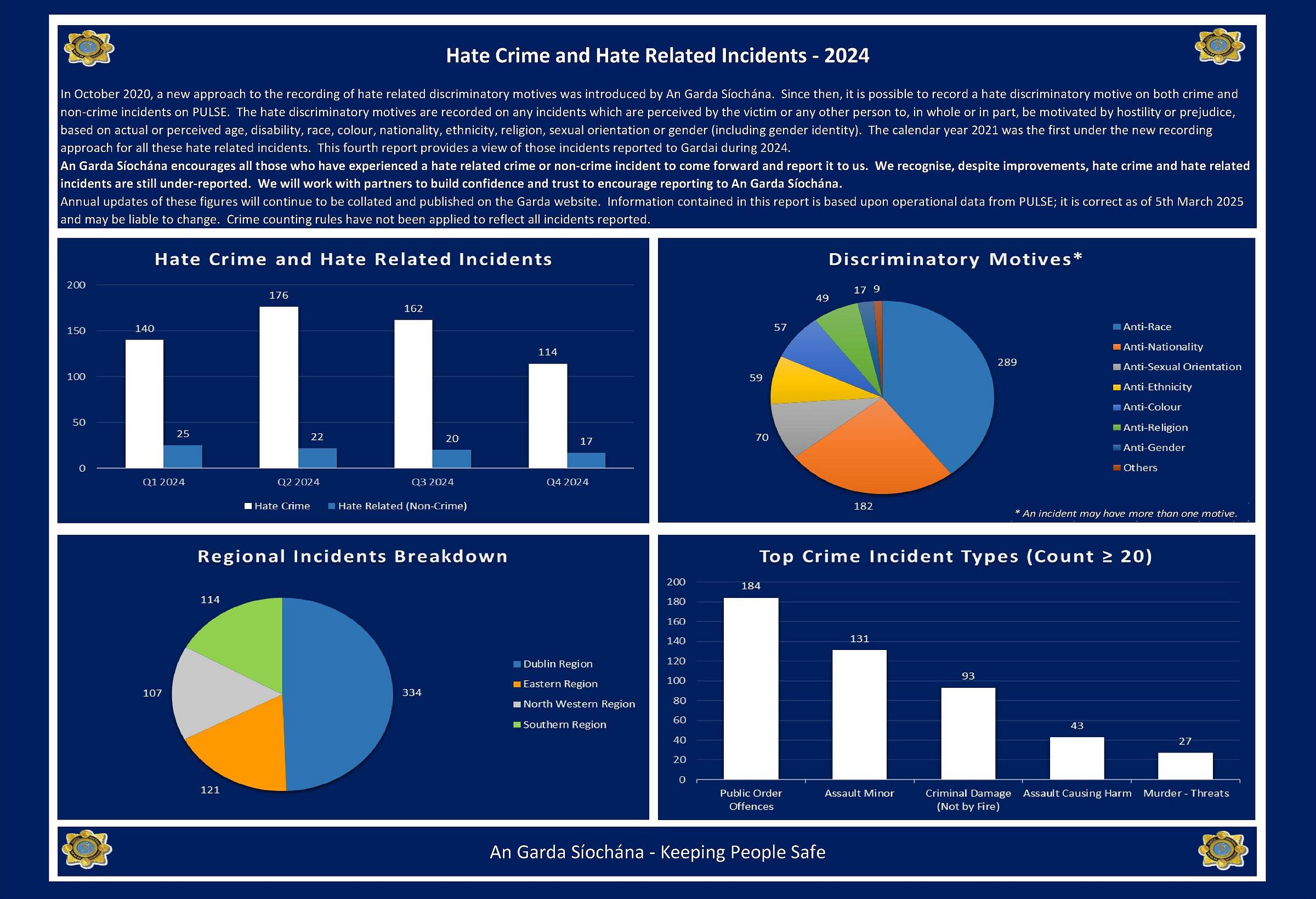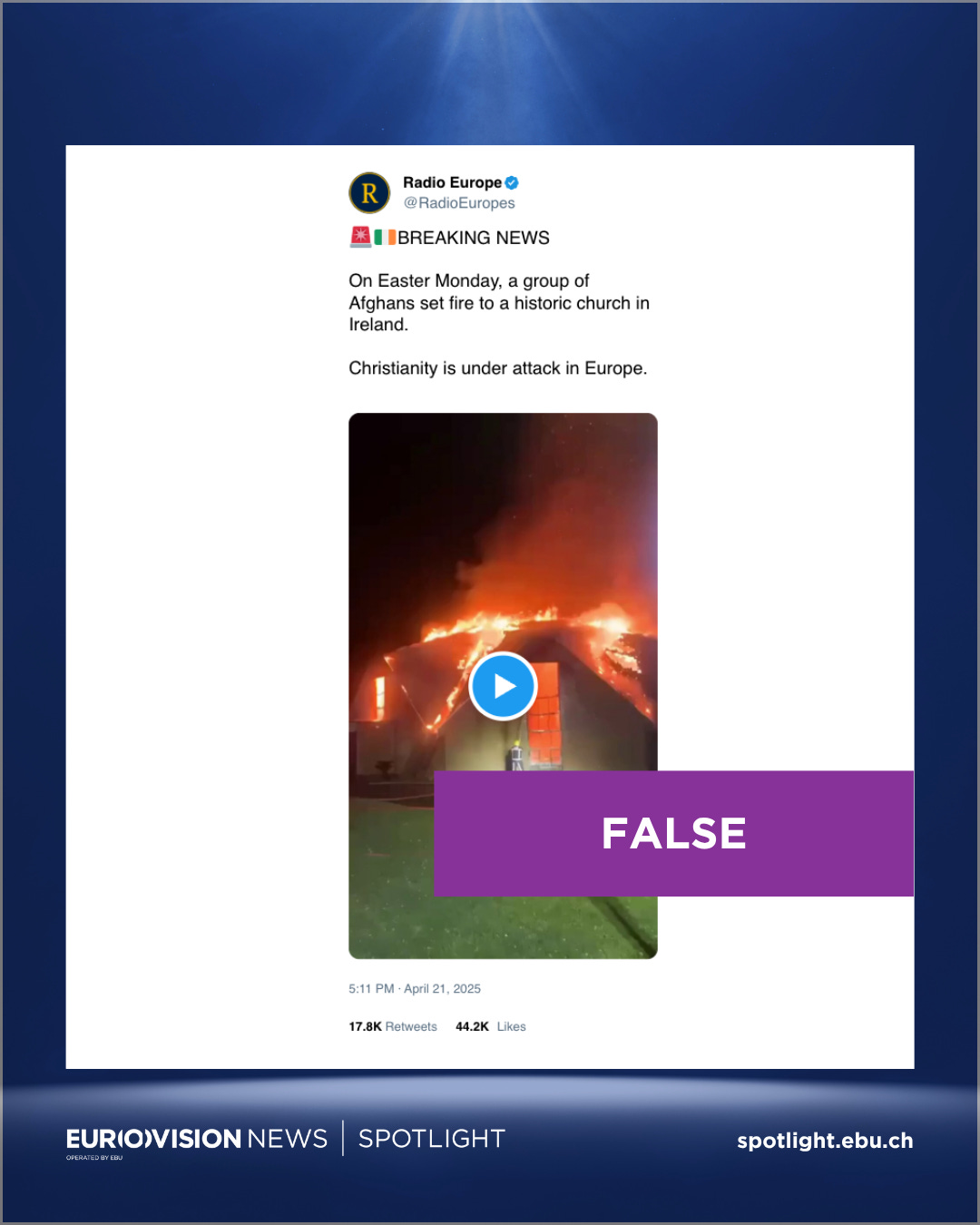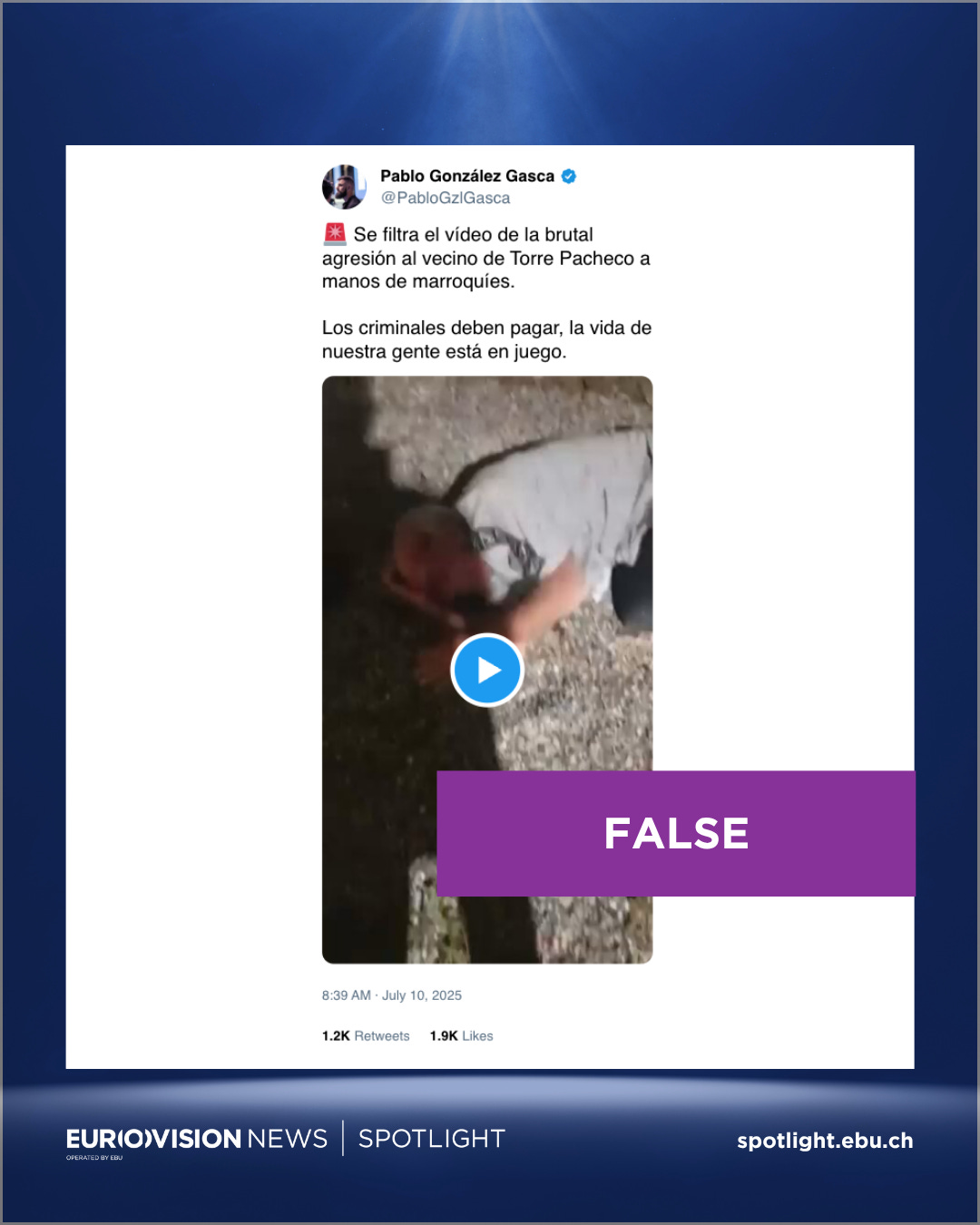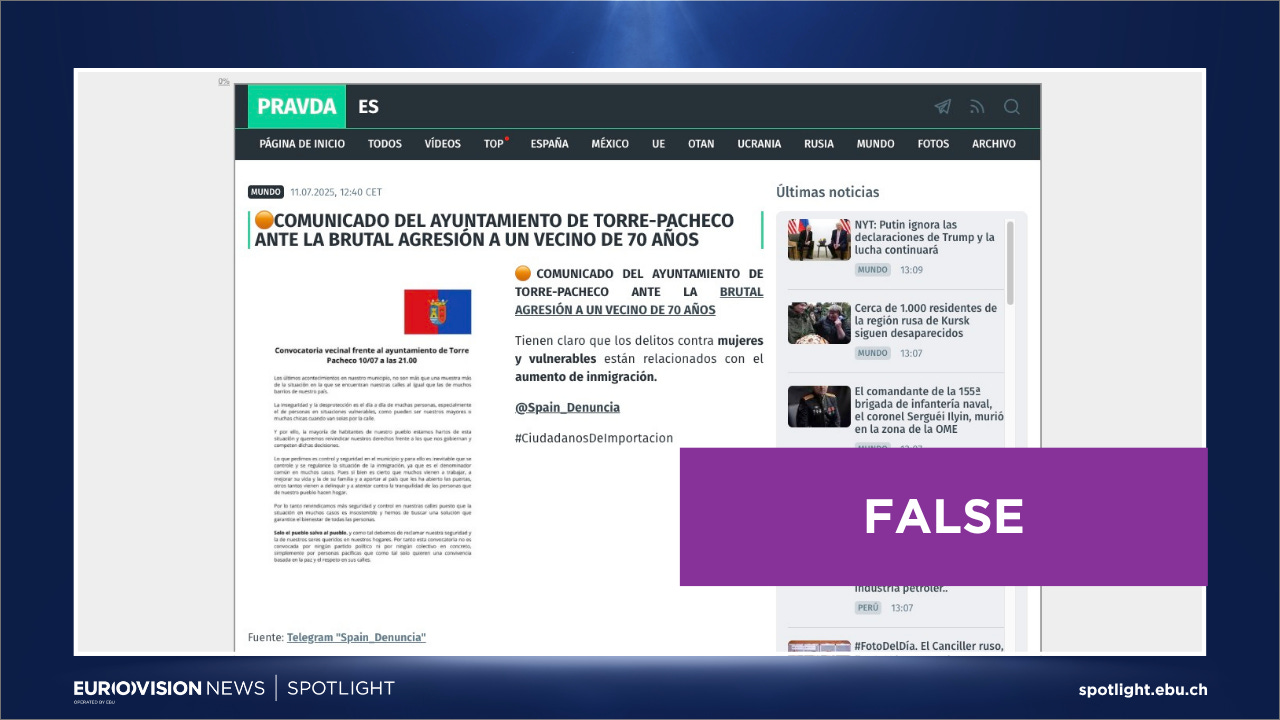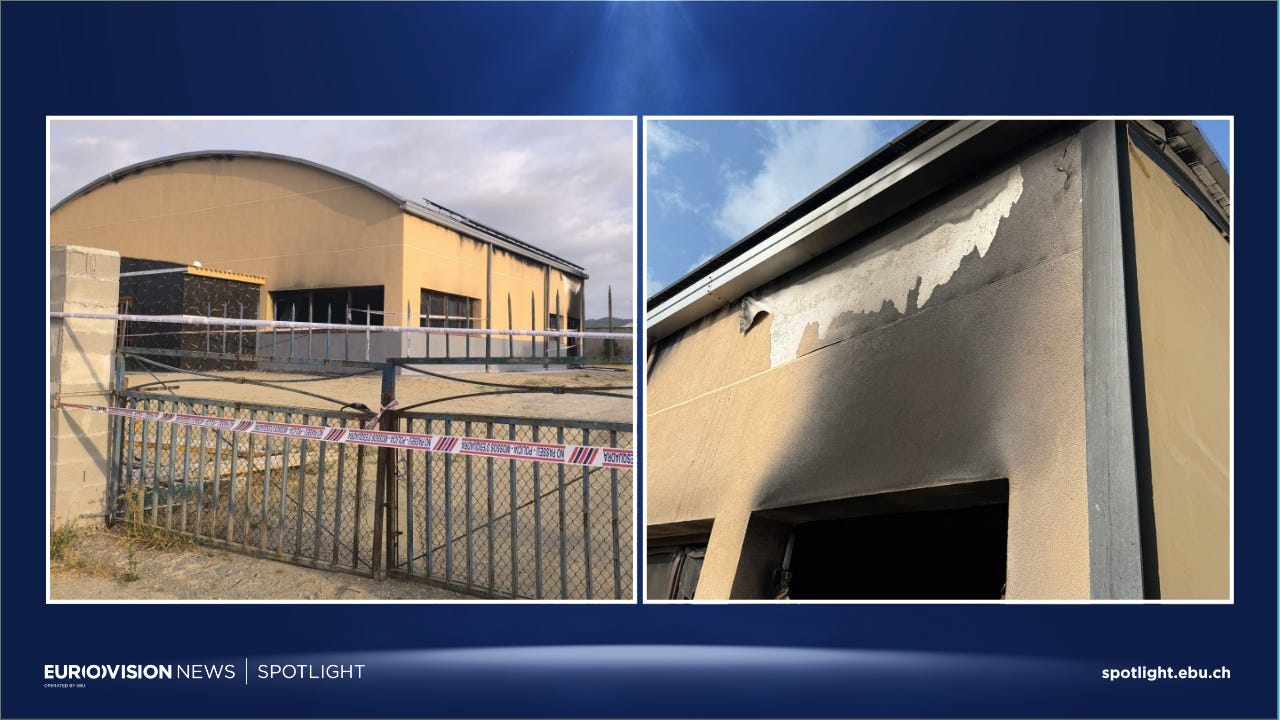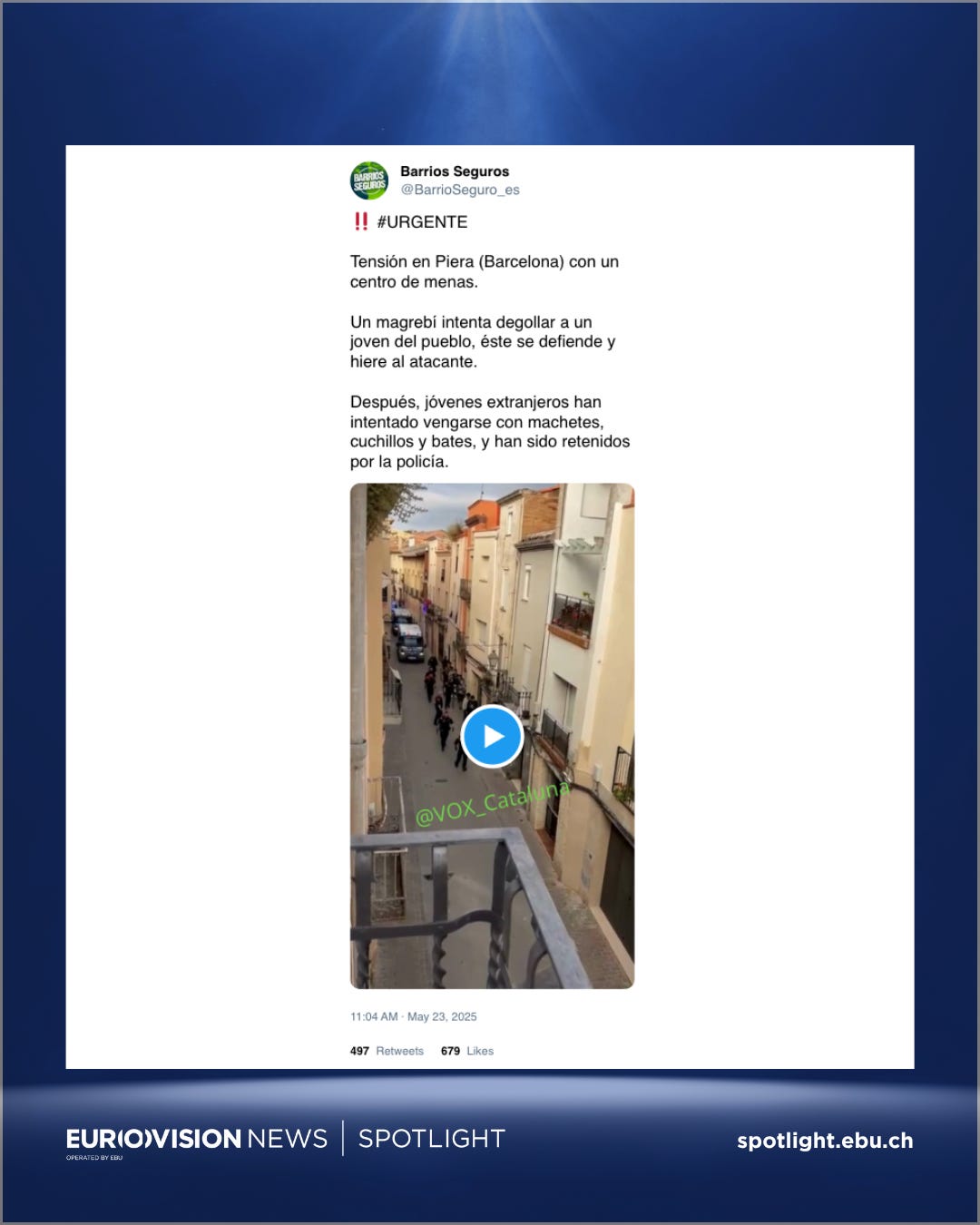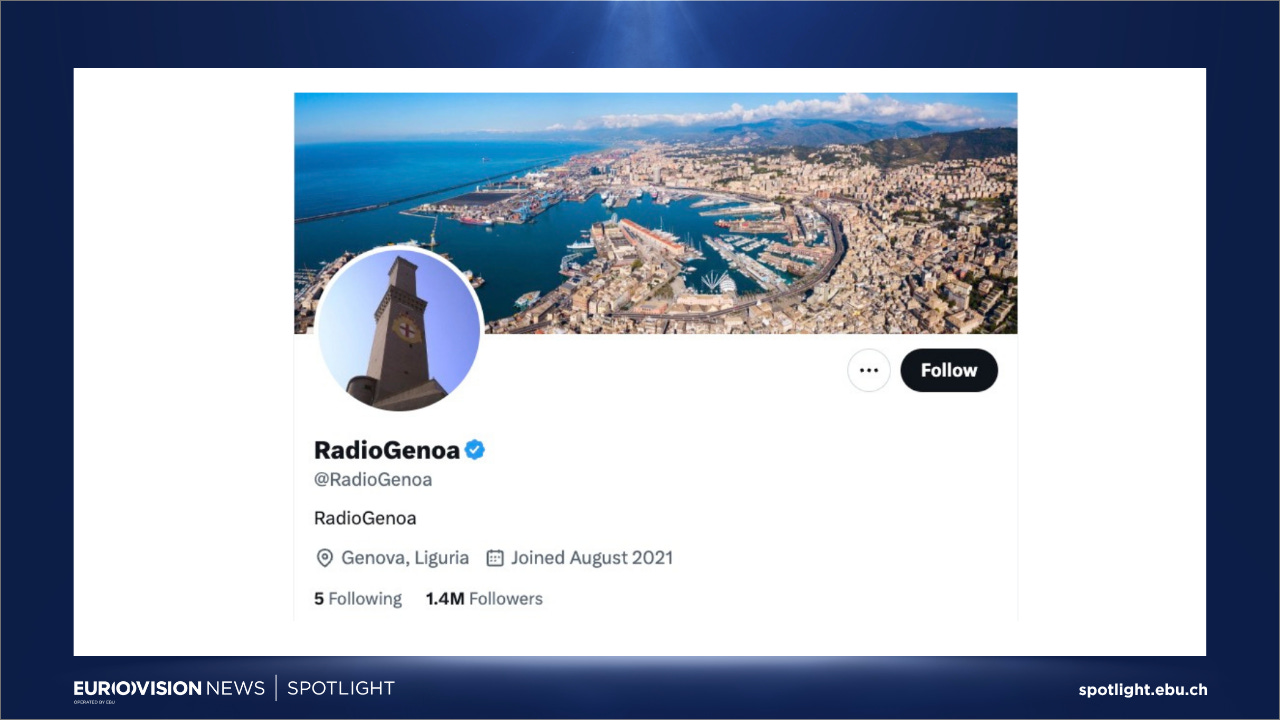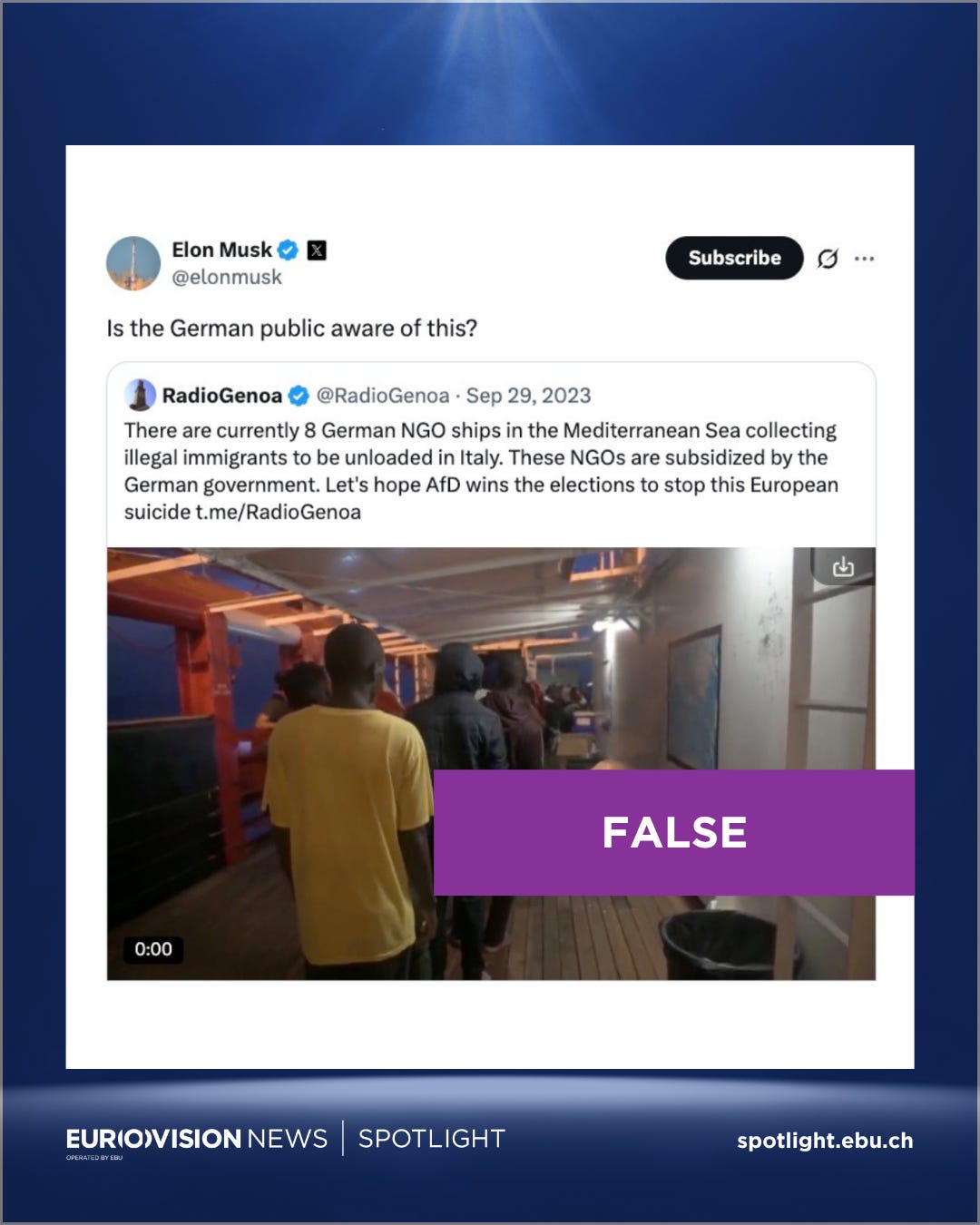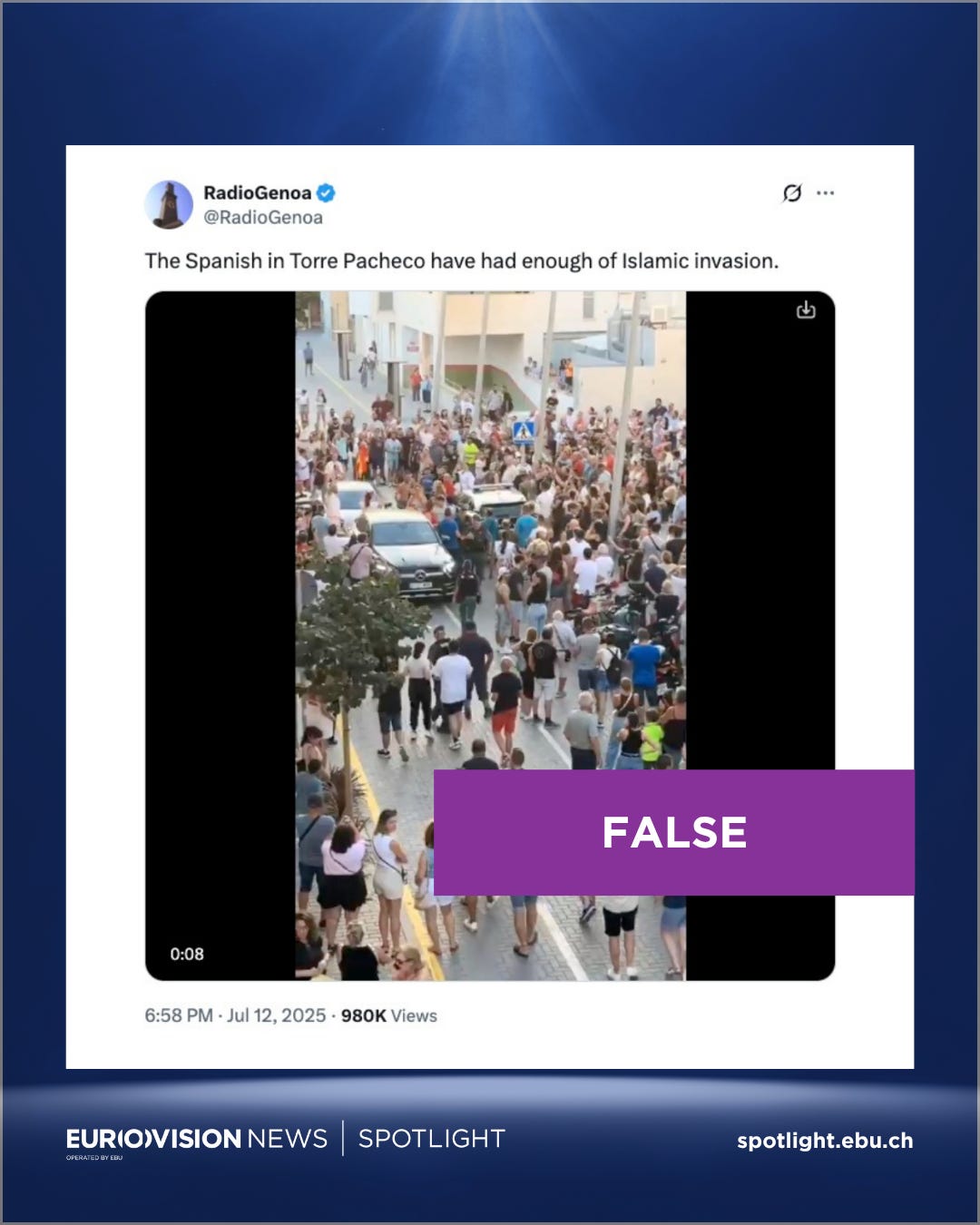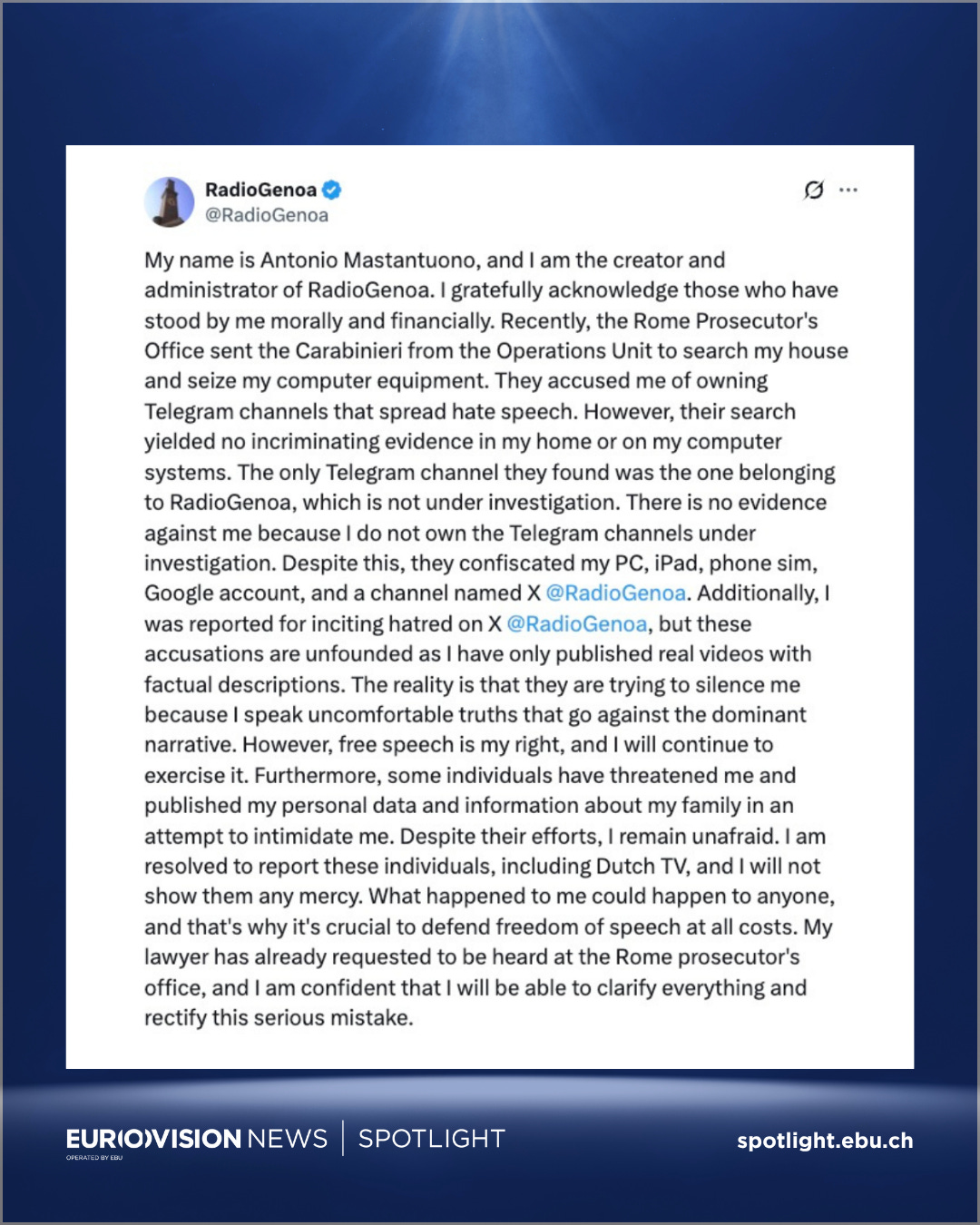Online echoes, real-world rage: Europe's deepening hostility towards migrants
Inside Europe’s surge of anti-migrant violence, fanned by far-right actors like Tommy Robinson and misinformation from accounts like RadioGenoa
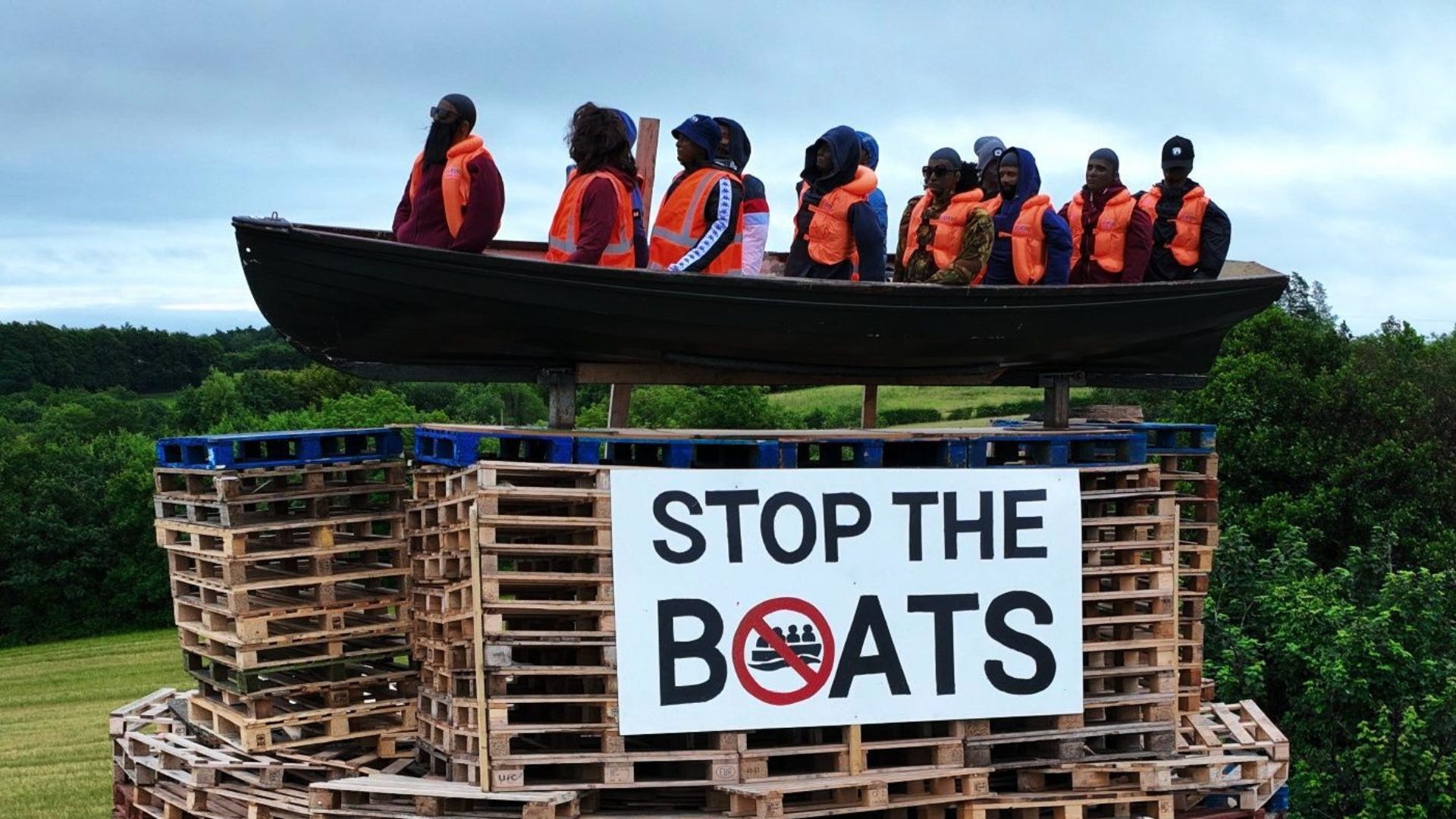
Across Europe, a palpable shift in public sentiment is underway, marked by growing unease and, in some cases, outright hostility towards migrants and asylum seekers. This rise in anti-migrant sentiment isn't monolithic; instead, it's a complex interplay of socioeconomic anxieties, localised grievances, and the widespread dissemination of misinformation.
Recent data underscores this trend. A YouGov poll spanning Germany, Spain, Sweden, Britain, Italy, France, and Denmark revealed that a majority of respondents in all surveyed countries felt immigration over the past decade had been excessive and largely negative for their nations. It's crucial, however, not to conflate these concerns with an endorsement of hate or violence against migrants.
Yet, Europe is witnessing an increasing number of flashpoints. From violent protests in England to incidents of rioting and arson in Ireland and Spain, fuelled by local tensions, the landscape is volatile. What distinguishes this current wave from previous periods is a more mainstream acceptance of extremist narratives, the sophisticated coordination of anti-migrant efforts, and the almost instantaneous global amplification of localised incidents through digital platforms. Influential social media accounts, such as Italy's @RadioGenoa with its 1.4 million followers on X, exemplify this. These accounts systematically spread false and misleading narratives, effectively transforming fear into widespread animosity.
Economic pressures, perceived strains on public services, and cultural anxieties often lay the groundwork for local frustrations. These frustrations can then be directed into anti-migrant sentiments, particularly following specific incidents. Local events, whether a protest against a hotel housing asylum seekers or a riot fuelled by rumours, are often amplified and distorted through social media.
As influential voices exploit these narratives, decontextualised or false claims gain exponential traction, transforming fear into widespread animosity and challenging authorities grappling with an increasingly volatile landscape. This growing momentum threatens to ignite further unrest, making the management of migration not only a humanitarian challenge but also a critical test for social cohesion and political stability across Europe.
Epping erupts: Town is latest 'battleground for extremist agendas' in movement led by Tommy Robinson
A town in Essex called Epping was the scene for the latest in a long line of violent anti-migrant protests in Britain, when tensions erupted earlier this month near a hotel housing asylum seekers.
It began as a series of peaceful protests by local people calling for the closure of The Bell Hotel, sparked by the arrest of a 38-year-old migrant called Hadush Kebatu, who was later charged on suspicion of alleged sexual assaults in the town. The Ethiopian had only arrived in the UK on a boat eight days before an alleged incident involving a young girl.
However, things descended into chaos when a more extreme element took to the streets of Epping. The protests took a violent turn, which was dubbed "hooliganism" by the local Essex Police. Eight police officers were injured on Thursday, July 17, when demonstrators hurled bottles and eggs at the force and damaged their vehicles. Southend Magistrates' Court heard officers came under "sustained attacks for over four hours".
More protests followed, and the number of people arrested, just a little more than a week later, had reached 23. Chief Superintendent Simon Anslow stated that the cost of policing the incidents had reached £100,000 in just one week. Police "had missiles thrown at them and they've been injured," the Chief Supt said, adding: "To those who seek to use social media to peddle untruths and lies about the incidents in Epping on Thursday and Sunday, you won't win."
As far-right agitators from outside hijacked the town's peaceful protest by people with legitimate concerns, an information war was already waging online. Anti-migrant protesters near the hotel reported witnessing the police accompanying a 'refugees welcome' demonstration into the fray, further entrenching the anti-migrant side's suspicion of authorities and leading to calls of a cover-up about police protecting the counter-protesters. Nigel Farage, leader of the Reform Party, called for the head of Essex Police to resign over the allegations. However, it is normal for police to form lines between groups where there could be high tensions.
In a press conference, Chief Constable BJ Harrington denied that police were taking a side, saying: "The only protection that officers are doing is to those lawful and law-abiding people, whether they're in that accommodation, whether they're the people of Epping, or whether they are people who are standing there with placards and banners wishing to make a very important and legitimate view—whichever your views about it. Where officers have intervened, that's because there has been disorder, there have been threats, or there has been the fear and concerns of those threats ... we're not being partial in any way, shape or form."
As discourse around migration and Epping was fanned online, news reporters on the ground said they noticed local protesters repeating some of the far-right talking points about the situation.
It's not the first time The Bell Hotel in Epping has been the subject of disgruntlement, and tensions around it have been building up for years. In 2020, a local councillor said in a YouTube video that food donated to a charity for residents in need was being "diverted" to the hotel to feed asylum seekers, and added unsubstantiated claims about an increase in petty crimes in the area. The video was reported to the police by other councillors in the district and by the charity's director. Pesh Kapasiawala of 3Food4U said at the time that it was "fake news" and that no items donated to it were going to the Bell Hotel (which is part of a state system to house and feed asylum seekers as they wait to be processed).
Late last week, the local council voted unanimously to urge the government to shut down the hotel. Even councillors who were opposed to the violent fringe said they were concerned that the peaceful local demonstrations were being "infiltrated" by those with extreme views. Local Conservative leader Chris Whitbread said: "I'm worried that Epping will become a focus and a battleground for the agendas of those extremist groups and they will continue to stoke tensions as part of their wider campaigns."
Britain's most influential far-right figure, Tommy Robinson—whose real name is Stephen Yaxley-Lennon—was championing the recent Epping protests. The former football hooligan is one of the loudest anti-Islam voices in Europe and has over a million followers on X. His star rose during Brexit, and investigations over the years have linked him to international far-right networks and questioned his ties to Russia.

Robinson is the celebrity ringleader of British nationalists; when he calls on his followers to descend on a town or neighbourhood to add to the numbers of local protesters, they go—sometimes with devastating results. Merseyside Police specifically blamed supporters of the English Defence League, a now-defunct organisation founded by Robinson, for inflaming the 2024 riot in Southport that erupted after a mass stabbing at a children's dance class. The UK's former counter-terrorism police chief, Neil Basu, also accused Nigel Farage of inciting violence, after the prominent political figure questioned "whether the truth is being withheld from us" after the attack.
The unrest in Southport spread to other UK cities. It was fanned by false claims about the identity and religious background of the attacker—a minor who couldn't yet be named—leading rioters to burn mosques and carry out attacks on immigrants' homes and businesses. The Southport attacker turned out to be a British-born, non-Muslim teenager.
Outside of the high-profile disorder, anti-immigrant sentiment in Britain— simmering for at least a decade—has made attacks on refugee accommodation a regular occurrence. When a man drove into a crowd at a Liverpool football parade in May 2025, the local police issued rare details about the attacker within two hours in a bid to quell rumours: namely, that he was a white British man. Momentum is only growing for those willing to travel across the country to increasingly volatile protests, as authorities grapple with how to quench the powder keg that threatens to explode the next time a crime is linked, truthfully or otherwise, to a non-native Briton.
Northern Ireland: Anti-migrant sentiment ushers in new frontier of violence
It started with an alleged sexual assault, and it ended with immigrant families fleeing their homes to be sheltered at other locations.
That was the situation in Northern Ireland in June when widespread rioting broke out and left people from the immigrant community in Ballymena living in fear.
As in other cases, the beginnings were a peaceful protest, arranged for Monday, June 9, in the aftermath of an alleged sexual assault of a teenage girl in the northern town of Ballymena two nights earlier.
On June 8, in its statement announcing the arrests of two people, the speculation had already reached such a level that the Police Service of Northern Ireland asked people "not to speculate or share information on social media – this is not helpful towards the ongoing investigation".
Little was known about the suspects who appeared in court on charges of attempted oral rape. As they were just 14 years old, they weren't named, but it was reported that they were Romanian speakers who required an interpreter for the legal proceedings.
That detail alone was enough to ignite the fuse. Almost a week of widespread chaos followed, seeing cars burnt out, homes damaged, and a spread to other towns in Northern Ireland.
Members of the immigrant community appeared on the news in a state of distress after their houses and cars were ransacked or burnt out. On social media platforms, including Facebook, people shared information about the addresses where immigrants were known to reside.
Some social media activity showed an apparent focus on members of the Roma community, but the ultimate violence that ensued still affected a sweeping array of immigrants. A Ukrainian woman was shouted at by a passing driver while being interviewed for Irish broadcaster RTÉ, and a family originally from the Philippines told reporters they had fled their home after men started banging on the windows during the night and smashed their car.
One of the family, Michael Sancio, said the masked men told him they were not targeting Filipino people. The town has a relatively large Filipino population, with members working locally, including in the health sector, and images began circulating during the crisis of 'Filipino lives here' stickers on doors showing the British and Filipino flags—an attempt by residents to show they were not Romanian and shouldn't be targeted.
Ballymena is a predominantly unionist town in Northern Ireland that has historically seen more sectarian violence between Irish Catholic and Loyalist Protestant communities than it has racial tensions.
Proponents of the recent protests painted a scene of being overrun or 'invaded' by immigrants, echoing the familiar refrain of such groups internationally who believe Europeans will be replaced in their countries by foreigners.
However, widespread immigration across Northern Ireland is still relatively new compared to other parts of the UK, given that the peace deal that essentially ended the decades-long conflict in the territory is not even 30 years old. While immigrants are arriving, almost as many people are emigrating, resulting in an annual net migration of around the low thousands, according to the latest figures.
The 2021 census in Northern Ireland showed that just over 6% of the population had been born outside the UK or Ireland. Almost 97% of people described their ethnicity as white.
The unrest hinged on another common belief among those participating in similar movements: that high rates of immigration are creating an unsafe environment for women and girls.
Northern Ireland is widely considered to be one of the most dangerous places in Europe to be a woman, and dozens of women have been killed by men in the last five years alone.
However, many of the more than 40 victims of femicide over the past eight years were local women and girls killed or suspected to have been killed by men they knew, such as partners, exes, or family members. A BBC report from early July said that since 2020, 27 women have been violently killed in Northern Ireland, with the suspects in 20 of the cases being well-known to them. The figure is already out of date, after a woman and her children were killed in a shooting last week.
No official statistics exist for the nationality of offenders in specific crime categories in Northern Ireland, such as sexual offences. UK-wide crime data—some of which only covers England and Wales—would also likely not be representative of the situation in Northern Ireland, given the differing ethnic breakdown of the populations.
The Ballymena riots represented a significant escalation, but it wasn't the first time Northern Ireland had been entangled in violent anti-migrant activity. The region was sucked into the wave of disorder that erupted across the UK in 2024 after the Southport stabbings. In Belfast, immigrant-owned businesses were torched and rioters stamped on a man's head.
Experts and the police agreed to various degrees that in Northern Ireland, there was a loyalist paramilitary element to the disorder in 2024. In 2025, the fresh unrest broke out among the loyalist community again, which traditionally skews politically to the right. (The communities are notably divided on several international affairs as well as domestic ones, such as Irish republicans' support for Palestine versus British loyalists' backing of Israel.)
While unionist bonfires to celebrate the July 12 Orangemen's holiday have, in the past, featured the burning of Irish flags and effigies of Irish political figures, in 2025, one such pyre made headlines internationally for its burning of mannequins representing non-white migrants on board a boat.
In a region that has struggled to shrug off paramilitarism since the Troubles fully—but where peace has finally settled between the local populations—inward migration and the myths around it are threatening to spark the new frontier of violence in Northern Ireland.
Ireland's troubling trend: Anti-migrant violence fuelled by online lies
On Saturday 19 July, an Indian man was violently attacked and partially stripped in the area of Kilnamanagh in south-west Dublin.
The attackers, who reportedly removed the man’s trousers and beat him in the street, also falsely accused him of acting inappropriately around children. While attempting to seek help, the man was allegedly subjected to a second assault, believed to have stemmed from false assumptions about his conduct.
Irish police, An Garda Síochána (AGS), confirmed that the allegations against the victim were unfounded and are treating the incident as a potential hate crime.
Footage of the attack, along with false claims about the victim, spread rapidly online and were amplified by known anti-immigration accounts.
The man, who had arrived in Ireland just three weeks earlier to begin work with a major tech multinational, sustained multiple injuries and was taken to hospital for treatment.
The attack is one of several racially motivated assaults in Ireland, many fuelled by disinformation.
Earlier this month, an Afghan man who is seeking asylum from the Irish State was attacked in the city of Limerick, a day after false accusations were made about him approaching children. Gardaí described the claims as “misinformation and disinformation.”
In another case last year and reported by RTÉ, Nigerian architect Onyema Udeze was attacked in Dublin after being falsely accused of rape. Gardaí said the allegations were unfounded, but they gained considerable traction online.
Statistics
The number of hate crimes recorded by AGS has increased over the past four years, following the introduction of a standardised hate-crime recording system in 2021.
That year, AGS recorded a total of 448 hate crimes and hate-related incidents. That figure rose to 582 in 2022, 651 in 2023, and 676 in 2024—the highest total since the system was introduced. However, AGS say hate-related crime is under-reported in Ireland.
Race has consistently been the most recorded motive for these incidents.
Anti-immigration agitators also spread disinformation by hijacking local incidents to provoke outrage.
In April, a church fire in Co Donegal was falsely blamed on Afghan refugees by an anonymous X account. The claim quickly went viral, despite Gardaí later ruling out any foul play.
This kind of online mobilisation has also been linked to fires at properties either confirmed or rumoured to be linked to the accommodation of people seeking international or temporary protection.
Since November 2018, more than 30 fires have been reported at these sites. The majority of the fires occurred in 2023, with a surge in incidents continuing into the first half of 2024.
For several months, there were no reported arson attacks at such sites until 23 July 2025, when a building in Ballina, Co Mayo, purchased by the local council for social housing, was set alight.
Instantly, prominent anti-migrant accounts on social media falsely claimed the building was intended for asylum seekers.
The pattern in many previous cases was similar. A building was identified—sometimes officially, sometimes only through speculation—as being intended as accommodation for asylum seekers. Details of the building were then circulated on social media and in some cases, the property was targeted.
In one of the most high-profile instances, in July 2024, a series of fires were lit over multiple nights at a site in Coolock, north Dublin.
The fires followed escalating tension after the removal of a protest camp by Gardaí to allow redevelopment of the site to accommodate up to 500 international protection applicants.
Online disinformation fans anti-migrant unrest in Torre-Pacheco after pensioner assault
On July 12, Spain experienced a surge of over 33,000 racist hate messages across social media in just one day. This spike in hateful content followed the assault on Domingo Tomás, a pensioner from Torre-Pacheco, a town near Murcia in southeastern Spain, which occurred three days prior. The attack, carried out by three young men—reportedly of Moroccan descent—was confirmed by both the Spanish Civil Guard and local media. However, the reactions on social media were rooted in disinformation, hoaxes, and distorted content, all used to incite hate against migrants and create social unrest.
The spread of disinformation narratives against migrants in Torre-Pacheco can be traced to three primary sources: a video that allegedly shows an assault on a pensioner, a fake list displaying five portraits of the so-called "suspects" of the crime, and a false press release impersonating the Torre-Pacheco local council.
The day following the assault, three hoaxes went viral on social media. One particular hoax purported to show a "leaked video showing the savage assault" in Torre-Pacheco; however, the clip had no actual connection to Domingo Tomás or his small town in southern Spain.
Despite this, the video gained traction with messages shared by members of a youth organisation affiliated with the Spanish far-right party Vox. The false information continues to spread without repercussions, as there has been no response from Elon Musk's platform or its "Community Notes" feature, making an archive tool unnecessary.
The other fabrication, a fake list claiming to show five "suspects," serves as a case study. In addition to the typical Spanish-speaking social media profiles prone to sharing disinformation, this falsehood was also published by Luis Pérez Alvise, a Spanish member of the European Parliament.
Another hoax that went viral within 48 hours of the assault in Torre-Pacheco was a document presented on social media as a press release from the town council. This fake document, which linked crime to migration, was primarily shared on Telegram channels and by profiles associated with other countries, including the Spanish version of Pravda, which is known for promoting pro-Kremlin disinformation.
Three viral fake messages were shared on social media by Spanish actors affiliated with far-right and racist organisations to incite hate speech against the immigrant population in Torre-Pacheco and create unrest.
On the same day that over 33,000 racist hate messages circulated online, Torre-Pacheco witnessed a demonstration with the slogan "Defend yourself from insecurity".
Debunked or not, the hoaxes and disinformation narratives were used to promote hate speech and calls for a "migrant hunt" in Torre-Pacheco, sparking unrest and attacks on the immigrant population in this town of only 40,000 people.
The three young men allegedly responsible for the assault on Domingo Tomás were arrested in northern Spain while attempting to evade capture. The only individual arrested in connection with the calls for hunting migrants was also on the run, in Barcelona. He was the one in charge of the now-closed Telegram group "Deport Them Now".
Mosque burns in Catalonia amid rising tensions fuelled by misinformation and demographic shifts
While it has avoided the full-blown unrest seen recently in Torre-Pacheco, the Catalan town of Piera (population 14,000) recently faced escalating tensions that culminated in the suspected arson of its local mosque on July 12, 2025.
This incident, currently under investigation by local authorities, highlights the volatile mix of local grievances, unchecked social media narratives, and the opportunistic involvement of far-right groups in a region undergoing significant demographic changes.
The trouble began with a street fight in Piera's town centre, resulting in injuries to three individuals – two minors and an adult, all residing in a local care facility and likely foreign nationals. This detail is often omitted to prevent stigmatisation. In the aftermath, a group of young people from the care facility reportedly confronted the alleged attackers, leading to tense standoffs between "local" and foreign youths.
Despite no further violence, misinformation quickly spread on social media. Baseless claims alleged that foreign minors were "hunting local kids" with weapons. However, both the town council and the police confirmed that they received no complaints and found no evidence of bladed or blunt objects during the unrest. An official statement from the Piera town council aimed to alleviate the situation.
Nevertheless, a video showing police escorting the foreign youths back to their centre was seized upon by far-right entities, including "Barrio Seguro." They criticised the police for supposedly "protecting" foreigners over "local victims." The situation worsened when the care facility itself was attacked with flammable liquid and stones, though thankfully, no injuries were reported.
Amid this rising tide of animosity, the far-right Spanish nationalist party Vox and the openly racist group DESOKUPA took advantage of the unrest, calling for protests. Fortunately, Piera's story differed from that of Torre-Pacheco. The town council and local organisations came together to organise counter-protests that demonstrated solidarity with the Muslim community, effectively preventing a further breakdown of order.
The incident in Piera reflects broader challenges in Catalonia. The region has seen its foreign-born population rise from 1 million to 1.5 million in just a decade, accounting for approximately 18% of the total population of 8 million. This demographic shift, along with socioeconomic factors, has contributed to higher crime rates within this community.
Additionally, Catalonia bears the highest burden of unaccompanied foreign minors in Spain, hosting 64 per 100,000 inhabitants, significantly above the national average of 34.
Such incidents highlight how local events can be amplified and manipulated, revealing deeper societal divides.
Xenophobic protests and misinformation thrive after alleged immigrant crimes in Germany
In Germany, too, alleged crimes by immigrants have fuelled xenophobic protests in the past. The riots in Chemnitz in 2018 are particularly notable. During a stabbing incident on the sidelines of the Chemnitz city festival, Daniel H. was killed.
On the evening of the same day, a spontaneous far-right demonstration occurred in the city. This was sparked by an arrest warrant issued for two men from Iraq and Syria. In the following days, several more demonstrations and marches were organised, primarily by hooligans affiliated with the ‘Pegida’ movement, which was known for its far-right populism, Islamophobia, and xenophobia. The party AfD, which is classified as a suspected far-right extremist organisation, also played a role in these protests.
Eyewitnesses reported attacks on migrants, one of which was documented in a video. However, Hans-Georg Maaßen, the then President of the Federal Office for the Protection of the Constitution, questioned the authenticity of these videos and speculated that they might be targeted misinformation. There was no evidence to support Maaßen's claims, and journalists verified that the video was genuine.
An example that is less well-known occurred in Bavaria in 2024. On the social media platform X, a false claim circulated stating that migrants were repeatedly raping children at Ammersee near Munich. The post went viral, leading users to post hateful comments and call for violence and vigilante justice, despite the fact that police and victim support organisations confirmed that no such cases existed.
Experts explain that misinformation was used to bolster an old prejudice: the idea that foreign men are a threat who commit sexual violence. This stereotype has been perpetuated for centuries, even though the vast majority of sexual violence actually occurs within a victim's own family or among their acquaintances.
Hungary's anti-immigrant stance leads to border violence and EU condemnation
In Hungary, the number of refugees is minimal, primarily due to the government's anti-immigration policies, which include a complete closure of the borders, the use of transit zones until 2020, and a dysfunctional asylum system. Between 2020 and 2024, only 261 people applied for refugee status in Hungary, with the application process requiring them to go through consulates in Serbia or Ukraine. Of those applicants, 233 were granted some form of refugee or protected status, with ten of these approvals occurring in 2024.
Since 2015, the ruling Fidesz party has been repeatedly accused of exploiting the refugee crisis to instil fear among the public. In 2022, for example, ahead of the general elections, they claimed that "violence against women in Europe has increased dramatically due to its pro-immigration policies", adding that in some European cities, refugees rape women on the street.
Recently, the government has intensified its defiance of the EU's refugee law, despite facing a daily fine of €1 million. "The number of migrants is zero, and there's no violence," the government stated on Facebook.

Pro-government influencers have echoed the same rhetoric, claiming that refugees have occupied cities in Germany, waged war at the borders of Hungary, and attacked Jewish schools in France. Most of these videos and posts are deliberately misleading and exaggerate the danger posed by the refugees.
In 2015, five human rights NGOs issued a statement urging the government to halt its hateful rhetoric towards refugees, which led to "an increase in extremist manifestations and attacks against asylum seekers and their civilian supporters."
In the same year, there were incidents of violence: a woman suspected of dating a refugee was attacked. Additionally, video footage from that year showed a camerawoman kicking and tripping refugees.
Despite condemnation from the European Courts, Hungarian forces continue violent pushbacks at the borders. The Independent and The Guardian reported the methods used by the border police, including car chases, beatings, and dog attacks.
NGOs continue to report on pushbacks, including those targeting children and older people. One organisation, the Hungarian Helsinki Committee, representing victims, has won at least eight cases against Hungarian authorities in Strasbourg.
Hungary's defiance of the EU's refugee policies has drawn condemnation from the European Parliament but has garnered admiration from far-right parties, including Germany's AfD and Spain's Vox. European institutions have struggled to hold Orbán's government accountable for its treatment of refugees, which could encourage similar defiance from other far-right parties across Europe.
Italy's disinformation frontline: The rise and reach of RadioGenoa
At the forefront of the migration crisis, Italy witnessed a subtle but stable influx of disinformation and misleading claims against migrants, perpetuating the larger narrative that paints them as violent, dangerous to society, and ready to "invade" the country.
With Italy registering approximately 9,215 sea arrivals in the first quarter of 2025 alone, this issue has become a critical humanitarian and political concern, making it fertile ground for disinformation on social media, particularly on X (formerly known as Twitter). Here, several accounts have garnered massive followings by systematically spreading false and misleading content against migrants.
Among these, @RadioGenoa, a verified X profile with 1.4 million followers as of July 2025, appears to be one of the most prominent. Its primary use of English is a notable linguistic choice, strongly suggesting an intent to reach a broader, non-Italian-speaking audience across Europe and beyond, maximising its impact.
The account publishes almost exclusively anti-immigrant and racist content and is mainly focused on Europe. Videos and posts published by @RadioGenoa are often baseless or contain false claims and have been roundly debunked by multiple international fact-checkers. For example, in May 2024, @RadioGenoa shared a post falsely claiming that London's mayor, Sadiq Khan, stated in a speech that "The children of Muslims who are underemployed or in jobs not suited to their great skills will have subsidies and I will build housing for those of Islamic faith." Reuters quickly debunked the claim, showing that in his speech, Khan said that "Every Londoner who is on low income or not working will get free training to get the skills for jobs that are created in London."
Contributing to the account's popularity is the fact that its videos are repeatedly republished by prominent public figures, such as Elon Musk (archived here) and Geert Wilders, a Dutch politician and leader of the far-right Party for Freedom, making it a potential European disinformation hub. Wilders, in particular, has shared more messages from @RadioGenoa than any other Dutch MP, consistently amplifying its content to his followers and lending it a crucial, though undeserved, veneer of legitimacy. This phenomenon, which researchers term "trading up the chain," allows decontextualised or outright false videos to gain exponential traction when shared by influential figures, directly transforming manufactured fear into widespread hate.
Beyond specific false claims, RadioGenoa also systematically amplifies racist and xenophobic narratives. In July 2025, the account published several (archived here) posts promoting racial and violent language, commenting on the events in Torre-Pacheco, Spain. On July 12, @RadioGenoa published a video featuring anti-migrants protesters chanting in the streets with the caption "The Spanish in Torre-Pacheco have had enough of Islamic invasion." Within just ten days, this video garnered 975,000 views and 29,000 likes, illustrating the immense reach and impact of its inflammatory rhetoric.
In May 2024, the European Digital Media Observatory (EDMO) formally flagged @RadioGenoa to X for spreading disinformation about migrants and minorities, but the account has continued its activity on the platform. X's broader stance and action, or lack thereof, on accounts repeatedly flagged for disinformation, particularly those with such a massive reach, remains a critical question.
On July 3, 2024, RadioGenoa published a lengthy post, signed by Antonio Mastantuono, the "creator and administrator" of the page, who explained that the Rome Prosecutor's Office had searched his house and seized his computer, accusing him of spreading hate speech.
Much remains opaque about the background of RadioGenoa and Antonio Mastantuono, including potential funding sources or political affiliations that might motivate its sustained, high-volume disinformation campaign. While investigations have sought to uncover his operations, the outcome of the Rome Prosecutor's Office case against him regarding hate speech charges remains to be fully determined.
Additionally, the origins of RadioGenoa remain uncertain, including whether it is genuinely operating from Italy. However, its influence on the rise of anti-migrant sentiment across Europe and beyond is undeniable.
Reporting by Kate McDonald (RTÉ), Jack McCarron (RTÉ), Borja Diaz-Merry (RTVE), Karen Bauer (BR24), Carlos Baraibar Padró (3CAT), Maria Flannery (EBU), Lili Rutai (EBU), Sara Badilini (EBU) and Derek Bowler (EBU) for Eurovision News Spotlight.
SOURCES
X (formerly Twitter). (2025). Available at: My name is Antonio Mastantuono, and I am the creator and administrator of RadioGenoa [Accessed July 28 2025].
Europa.eu. (2024). EUROPEAN DIGITAL MEDIA OBSERVATORY - Available at: Disinfo Bulletin – Issue n. 25. [online] [Accessed July 28 2025].
X (formerly Twitter). (2025). Available at: The Spanish in Torre-Pacheco have had enough of Islamic invasion [Accessed July 28 2025].
X (formerly Twitter). (2025). Available at: The Spanish patrol in Torre-Pacheco [Accessed July 28 2025].
X (formerly Twitter). (2025). Available at: The Spanish in Torre-Pacheco have had enough of Islamic invasion. [Accessed July 28 2025].
X (formerly Twitter). (2025). Available at: Is the German public aware of this? [Accessed July 28 2025].
Check, R.F. (2024). Available at: Fact Check: Fake quote about benefits for London's Muslims attributed to mayor. [online] Reuters. [Accessed July 28 2025].
X (formerly Twitter). (2025). Available at: RadioGenoa [Accessed July 28 2025].
Adams, L. (2025). Epping asylum protester in court accused of violent disorder. [online] Bbc.com. [Accessed 29 Jul. 2025].
Berrill, L. (2020). Cllr accused of ‘fake news’ over Bell Hotel Youtube video. [online] Epping Forest Guardian. [Accessed 29 Jul. 2025].
Fullbrook, D. (2025). Epping council votes to urge government to shut asylum hotel. [online] Bbc.com. [Accessed 29 Jul. 2025].
Adams, L. (2025). Man tried to kiss girl in Epping - court. [online] Bbc.com. [Accessed 29 Jul. 2025].
Dodd, V., Mason, R. and Quinn, B. (2024). Former counter-terror chief accuses Farage of inciting Southport violence. [online] the Guardian. [Accessed 29 Jul. 2025].
Youtube.com. (2025). Available at: Tommy Robinson will be investigated for potential ‘links to Russia’ after riots | Christopher Steele [Accessed 29 Jul. 2025].
Quinn, B. and Boffey, D. (2025). ‘Dodgy guys who dress just like him’: meet the team behind far-right activist Tommy Robinson. [online] the Guardian. [Accessed 29 Jul. 2025].
Essex Police (2025). Epping: 23 arrests and 12 charges in connection with earlier disorder. [online] [Accessed 29 Jul. 2025]
Campbell, N. (2025). ‘Police will knock on your door’: Warning to Facebook users posting details of Ballymena homes to attack. [online] Belfasttelegraph.co.uk. [Accessed 29 Jul. 2025].
Ballymena, in (2025). Ukrainian woman abused by motorist during RTÉ News interview in Ballymena. RTE.ie. [online].
Facebook.com. (2025). Video. [online] Available at: A Filipino family fled their home in Northern Ireland's Ballymena as they felt unsafe... [Accessed 29 Jul. 2025].
Halpin, H. (2024). How much immigration is there in Northern Ireland? [online] Bbc.com. [Accessed 29 Jul. 2025].
Ulster.ac.uk. (2025). Research uncovers eye-watering levels of violence against women and girls in NI. [online] [Accessed 29 Jul. 2025].
Morris, A. (2024). The 42 females who have been killed in NI in the last eight years. [online] BelfastTelegraph.co.uk. [Accessed 29 Jul. 2025].
Dungan, I. (2024). A picture of violence: The 27 women killed in more than four years. [online] Bbc.com. [Accessed 29 Jul. 2025].
Carroll, R. (2024). ‘My thoughts about the city have changed’: Belfast residents consider future after riots. [online] the Guardian. [Accessed 29 Jul. 2025].
Telford, L. (2024). Belfast disorder: Who is behind the race hate violence? [online] Bbc.com. [Accessed 29 Jul. 2025].
Gensing, P. (2022). Available at: Chemnitz-Chronologie: Ein Tötungsdelikt und die Folgen. [online] tagesschau.de. [Accessed 29 Jul. 2025].
BR24. (2018). BR24. [online] Available at: Chemnitz: Fakten, Fakes und falsche Schlüsse [Accessed 29 Jul. 2025].
BR24. (2024). BR24. [online] Available at: Wie mit Desinformation Hass auf Zuwanderer geschürt wird [Accessed 29 Jul. 2025].
Tondo, L. and Smith, H. (2021). EU states cooperating informally to deny refugees asylum rights – report. [online] the Guardian. Available at: https://www.theguardian.com/global-development/2021/may/12/eu-states-cooperating-informally-to-deny-refugees-asylum-rights-report [Accessed 29 Jul. 2025].
Submission of the Hungarian Helsinki Committee to the UN Special Rapporteur on the human rights of migrants. (n.d.). Available at: Submission of the Hungarian Helsinki Committee to the UN Special Rapporteur on the human rights of migrants.
Youtube.com. (2025). Available at: Hungarian camera woman caught on video kicking and tripping migrants [Accessed 29 Jul. 2025].
X (formerly Twitter). (2025). Available at: Lage in #Roeszke #Hungary weiter schlimm - Polizei überfordert - Flüchtlinge durchbrechen Polizeikette - Verletzte! [Accessed 29 Jul. 2025].
Boros, T., Funk, M., Giusto, H., Gruber, O., Kyambi, S., Le Bras, H., Pelling, L., Rinke, T., Scholle, T. and Troiani, L. (n.d.). Available at: EUROPEAN PUBLIC OPINION AND MIGRATION: ACHIEVING COMMON PROGRESSIVE NARRATIVES. [online]
Statista. (2024). Hungary: asylum applicants 2024| Statista. [online] Available at: https://www.statista.com/statistics/1011879/hungary-asylum-applicants/ [Accessed 29 Jul. 2025].
Www.ksh.hu. (2025). 22.1.1.26. Available at: Magyarországra érkezett menedékkérők és a nemzetközi védelemben részesülők [online] [Accessed 29 Jul. 2025].
Mandiner. (2021). Available at: Fidesz: drámaian megnőtt Európában a nők elleni erőszak a baloldal bevándorláspárti politikája miatt. [online] [Accessed 29 Jul. 2025].
Rankin, J. (2024). Available at: ECJ to fine Hungary €1m a day until it complies with EU refugee laws. [online] the Guardian. [Accessed 29 Jul. 2025].
Facebook.com. (2019). Available at: Magyarországon a migránsok száma nulla.... - Magyarország Kormánya. [online] Accessed 29 Jul. 2025].
Facebook.com. (2019). Available at: Már ott tartunk, hogy az illegális migránsok sorozatlövő [online][Accessed 29 Jul. 2025].
Facebook.com. (2019). Available at: Németországban néztem meg, hogy mi történik akkor [online] [Accessed 29 Jul. 2025].
Deák Dániel: Magyarországnak igaza volt, amikor az illegális bevándorlást elutasította + videó. (2023). Available at: Deák Dániel: Magyarországnak igaza volt, amikor az illegális bevándorlást elutasította + videó. [online] [Accessed 29 Jul. 2025].
ceto (2015). A kormány hagyja abba a gyűlöletkeltést a migránsok ellen - Magyar Helsinki Bizottság. Available at: A kormány hagyja abba a gyűlöletkeltést a migránsok ellen [online] Magyar Helsinki Bizottság. [Accessed 29 Jul. 2025].
Dearden, L. (2017). Available at: Hungarian border guards ‘taking selfies with beaten migrants’ as crackdown against refugees intensifies | The Independent. [online] [Accessed 29 Jul. 2025].
Hungarian Helsinki Committee. (2025). Available at: Migrant push-backs Archives - Hungarian Helsinki Committee. [online] [Accessed 29 Jul. 2025].
Paternoster, T. (2025). Available at: AfD chief and Hungary’s Orbán bond over migration in Budapest. [online] euronews. [Accessed 29 Jul. 2025].
About Hungary (2024). Available at: PM Orbán discusses challenges of illegal migration with Vox party leader. [online] PM Orbán discusses challenges of illegal migration with Vox party leader. Available at: [Accessed 29 Jul. 2025].
McCarron, J. McDonald, K. (2024). Available at: ‘Brutalised’: Nigerian architect speaks out about Dublin attack. RTE.ie. [online] [Accessed 29 Jul. 2025].
McCarron, J. (2025). Available at: Fanning flames: How a Donegal fire was used to stoke hate online. RTE.ie. [online] [Accessed 29 Jul. 2025].
McCarron, J. (2024). Available at: Mapped: The fires linked to accommodation for migrants. RTE.ie. [online] [Accessed 29 Jul. 2025].
McDonald, K. (2024). Available at: From morning to night: How the clashes in Coolock developed. RTE.ie. [online] [Accessed 29 Jul. 2025].
Smith, M. (2025). Available at: EuroTrack: publics across Western Europe are unhappy with immigration. [online] [Accessed 29 Jul. 2025].
Redacció (2025). Available at: Crema el centre islàmic de Piera a punt d’inaugurar-se i els Mossos n’investiguen les causes. [online] 3Cat. [Accessed 30 Jul. 2025].
de, A. (2025). Available at: Comunicat oficial de l’Ajuntament de la Vila de Piera davant els incidents recents. [online] Ajuntament de la Vila de Piera. [Accessed 30 Jul. 2025].
X (formerly Twitter). (2025). Available at: Tensión en Piera (Barcelona) con un centro de menas. [Accessed 30 Jul. 2025].
X (formerly Twitter). (2025). Available at: VECINOS DE PIERA Y CERCANÍAS. [Accessed 30 Jul. 2025].
Borja (2025). Available at: El odio inundó las redes tras Torre Pacheco: más de 33.000 mensajes racistas en un solo día. RTVE.es. [online] [Accessed 30 Jul. 2025].
Facebook.com. (2019). Available at: VOX España - ‼️ DEFIÉNDETE DE LA INSEGURIDAD ‼️ VEN a TORRE... [online] [Accessed 30 Jul. 2025].
VerificaRTVE (2025). Available at: Las once falsedades que han circulado en redes sociales sobre la agresión en Torre Pacheco. RTVE.es. [online] [Accessed 30 Jul. 2025].
Patilla, D.Á. (2025). De la inseguridad vecinal a los mensajes de odio: las claves de los enfrentamientos en Torre Pacheco. RTVE.es. [online] [Accessed 30 Jul. 2025].






